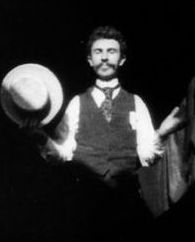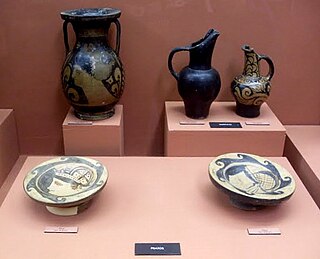Related Research Articles

William Kennedy Laurie Dickson was a British inventor who devised an early motion picture camera under the employment of Thomas Edison.

Alberto Santos-Dumont, self-stylized as Alberto Santos=Dumont, was a Brazilian aeronaut, sportsman, inventor, and one of the few people to have contributed significantly to the early development of both lighter-than-air and heavier-than-air aircraft. The heir of a wealthy family of coffee producers, he dedicated himself to aeronautical study and experimentation in Paris, where he spent most of his adult life. He designed, built, and flew the first powered airships and won the Deutsch prize in 1901, when he flew around the Eiffel Tower in his airship No. 6, becoming one of the most famous people in the world in the early 20th century.

Ribeirão Preto is a municipality and a metropolitan area located in the northeastern region of São Paulo state, Brazil.

Louis Aimé Augustin Le Prince was a French artist and the inventor of an early motion-picture camera, and director of Roundhay Garden Scene.

The Mutoscope is an early motion picture device, invented by W. K. L. Dickson and Herman Casler and granted U.S. patent 549309A to Herman Casler on November 5, 1895. Like Thomas Edison's Kinetoscope, it did not project on a screen and provided viewing to only one person at a time. Cheaper and simpler than the Kinetoscope, the system, marketed by the American Mutoscope Company, quickly dominated the coin-in-the-slot peep-show business.

In Brazil, public holidays may be legislated at the federal, statewide and municipal levels. Most holidays are observed nationwide.

Estádio Municipal Paulo Machado de Carvalho, colloquially known as Estádio do Pacaembu, is an Art Deco stadium in São Paulo, located in the Pacaembu neighborhood. The stadium is owned by the Municipal Prefecture of São Paulo. The stadium was inaugurated on 27 April 1940, in the presence of the Brazilian President Getúlio Vargas, the interventor Adhemar de Barros and the mayor of São Paulo, Prestes Maia. The stadium used to hold 40,199 people and its pitch dimensions are 104 m of length by 70 m of width, but is currently undergoing a renovation that will reduce capacity.

The Kinora was an early motion picture device developed by the French inventors Auguste and Louis Lumière in 1895, while simultaneously working on the Cinematograph. It was patented in February 1896.

The Museu Paulista of the University of São Paulo, commonly known as Museu do Ipiranga, is a Brazilian history museum located near the place where Emperor Pedro I proclaimed Brazil's independence on the banks of Ipiranga brook in the Southeast region of the city of São Paulo, then the "Caminho do Mar," or road to the seashore. It contains a huge collection of furniture, documents and historically relevant artwork, especially relating to the Brazilian Empire era.

Adriano Bispo dos Santos, or simply Adriano, is a Brazilian professional footballer who plays as a defensive midfielder.

Sherlock Holmes Baffled is an American silent trick film created in 1900 with cinematography by Arthur Marvin. It is the earliest known film to feature Arthur Conan Doyle's detective character Sherlock Holmes, albeit in a form unlike that of later screen incarnations. In the film, a thief who can appear and disappear at will steals a sack of items from Sherlock Holmes. At each point, Holmes's attempts to thwart the intruder end in failure.

Bom Retiro is a central district in the city of São Paulo, Brazil. It is primarily commercial but has industrial and residential areas.
Frederick S. Armitage was an early American motion picture cinematographer and director, working primarily for the American Mutoscope and Biograph Company. Often identified as "F.S. Armitage" in AM&B paperwork, Armitage had a hand in creating more than 400 often very short subjects for AM&B in the days where its films were made as much for the hand-crank operated Mutoscope device as for projection. Several of Armitage's subjects stand out from the company's regular routine of actualities and comic skits in their innovative use of camerawork, superimpositions, time-lapse photography and other effects then new to the art of film-making.

The Museum of Zoology of the University of São Paulo is a public natural history museum located in the historic Ipiranga district of São Paulo, Brazil. The MZUSP is an educational and research institution that is part of the University of São Paulo. The museum began at the end of the 19th century as part of the Museu Paulista; in 1941, it moved into a dedicated building. In 1969 the museum became a part of the University of São Paulo, receiving its current name.

The Cinemateca Brasileira is the institution responsible for preserving Brazilian audiovisual production. In July 2021, it experienced a major fire.

Events in the year 1932 in Brazil.

The Santos Dumont Collection, also known as Alberto Santos Dumont Collection, is a collection of about 1,500 items linked to Santos Dumont, under the guard of the Museu Paulista. The collection includes several types of material, including texts, objects and iconographies of the Brazilian inventor, in particular 323 images about the aeronautical trajectory of Santos Dumont. It is one of the best known funds of at least 123 that make up the Coleção do Museu Paulista. The collection was donated by the family after the inventor's death in 1932.

Militão Augusto de Azevedo was a Brazilian photographer and actor active in the second half of the 19th century. Militão founded the Photographia Americana studio in 1875, where his clients included Castro Alves, Joaquim Nabuco, Dom Pedro II, and Empress Teresa Cristina. His rates were among the lowest in the city. The location of the studio in front of the Church of Our Lady of the Rosary, frequented mainly by the Afro-Brazilian residents, led to his photography of prominent Black citizens of Brazil. He depicted Afro-Brazilians not as slaves, but as ordinary citizens. His other works were of singers and theater artists.

The Museum of Archeology and Ethnology of the University of São Paulo(MAE-USP) is a department of the University of São Paulo. Focused on research, teaching, and cultural and scientific diffusion. It was created in 1989, from the dismemberment of the archeology and ethnology sectors of the Museu Paulista, to which the collections of the Institute of Prehistory of USP and the Plínio Ayrosa Collection were merged. It is located in Cidade Universitária (campus), in the West Zone of São Paulo.
References
- 1 2 Rizzo, Sérgio (30 September 2008). "O filme esquecido de Santos Dumont". Folha de S. Paulo. Folha de S. Paulo. Retrieved 5 April 2019.
- 1 2 3 Adriano 2018, p. 11.
- ↑ Adriano 2018, p. 4.
- 1 2 Rosa 2008, p. 11.
- ↑ Adriano 2018, p. 9.
- 1 2 3 Adriano 2018, p. 10.
- 1 2 Adriano 2018, p. 2.
- 1 2 Adriano 2018, p. 3.
Bibliography
- Adriano, Carlos (2018). "O mutoscópio de Santos Dumont e a poética do found footage" [Santos Dumont’s mutoscope and the poetics of found footage]. Anais do Museu Paulista. Nova Série (in Brazilian Portuguese). 26 (8). São Paulo: 1–42. doi: 10.1590/1982-02672018v26e08 . S2CID 194831934.
- Rosa, Carlos Adriano Jeronimo de (2008). O mutoscópio explica a invenção do pensamento de Santos Dumont: cinema experimental de reapropriação de arquivo em forma digital (PDF) (tese) (in Brazilian Portuguese).